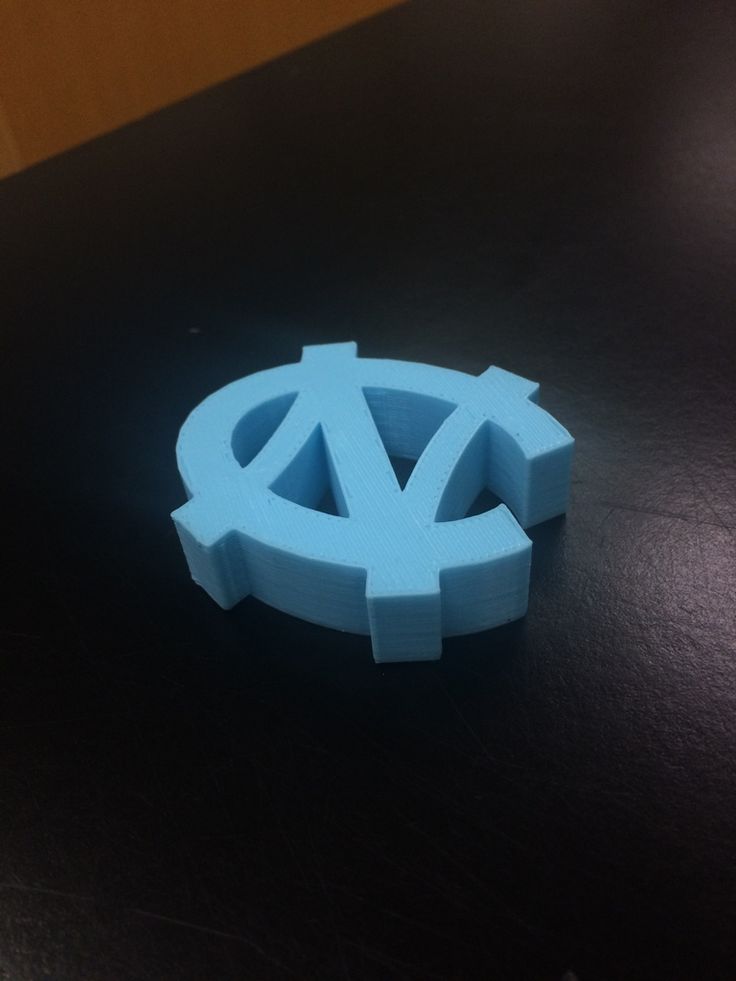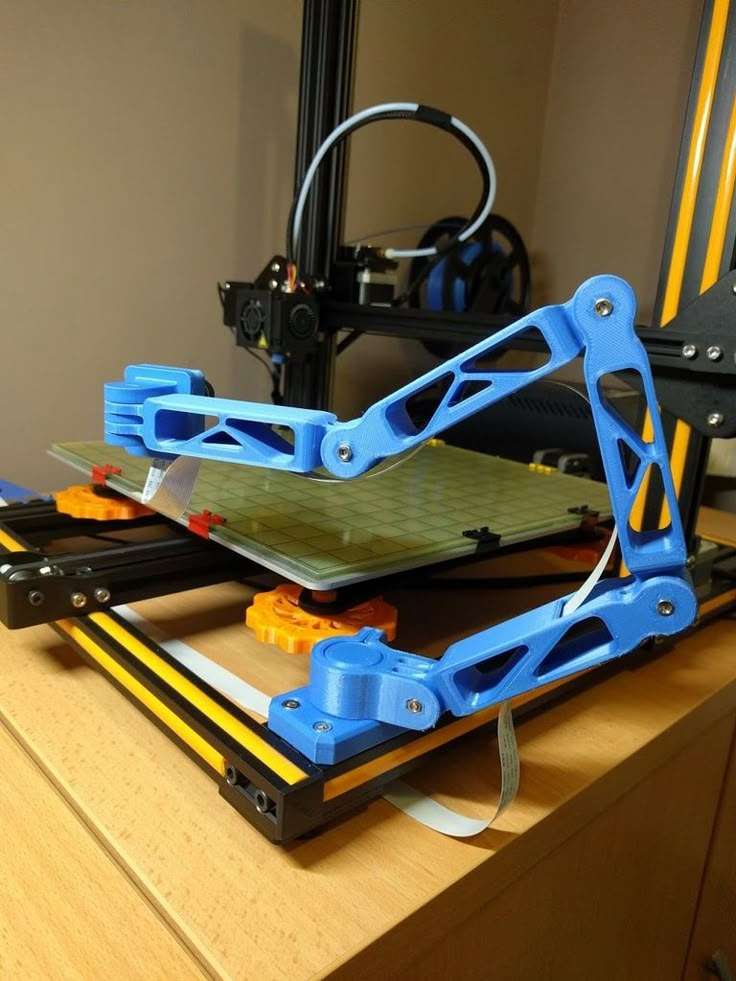3D printer robotics
Top 12 3D-Printed Robots — From Amphibians to Humanoids
Published on August 26, 2021 by Mikahila L.
Robotics brings together all the technologies that make it possible to design autonomous machines; combining knowledge in electronics, mechanics, and even biology. This is a field that has evolved quite a bit since C-3PO first hit the movie screens in Star Wars in1973. Roboticists have been in constant search of innovations that result in greater speed and productivity. Today, we have smarter robots because of advancements in artificial intelligence, machine learning, and of course, additive manufacturing. Indeed, 3D printing is widely used to manufacture robots, whether in the prototyping or final production stage, to imagine structure, materials, and new functionality. This is why we wanted to present to you some of the fascinating 3D printed robots we’ve come across, everything from humanoids, research tools, or even DIY machines—a section that should be of interest to all makers!
DIY Projects
Intel Openbot
Research organization Intel Labs used 3D printing to develop the Openbot, one of the robots that caught our team’s attention the most. The objective of the project was to create a small electric vehicle intended for smartphones, with the motto ‘Transforming smartphones into robots‘. The device is equipped with vast networks of sensors and has powerful computing capabilities allowing it to take advantage of the advanced functionalities of smartphones. Intel experts say they have opted for 3D printing because of its great accessibility, and also thanks to free software that facilitates the development of this type of project.
LittleBots is another project that you can do at home with your 3D printer. This robotics kit was created to serve as an introduction to robotics. It features all the necessary components of robotics: sensors, decision-making, and articulation, all in one simple, easy-to-assemble kit. What’s interesting is that LittleBot is fully 3D printed, so it can be made with just 3 screws. The device is open-source and controlled by an Arduino Nano, to take advantage of the global community around it.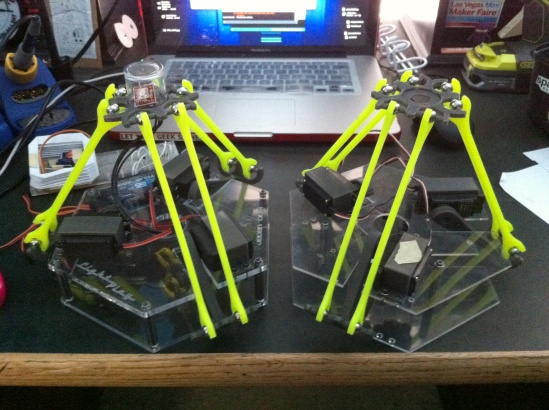 You can find the 3D print files of these robots through Thingiverse; The Arduino code can be found on the LittleBots download page.
You can find the 3D print files of these robots through Thingiverse; The Arduino code can be found on the LittleBots download page.
Humanoids
Atlas by Boston Dynamics
Boston Dynamics’ Atlas humanoid robots have recently caused quite a stir online with their performance during an obstacle course. Although they have already had some success, Boston Dynamics aims to test the limits of what is possible and continue developing Atlas to make robots withstand extreme conditions. The company relied on 3D printed components for the development of Atlas robots. For example, the legs are 3D printed, which made it possible to integrate hydraulic lines into the structure. Additive manufacturing has also been used to produce custom servo valves.
We could have classified the InMoov robot in the DIY category, as it is an open-source project. Indeed, it is the first human-sized open-source 3D printed robot in the world, created in 2012 by the French Gaël Langevin. Anyone with a 3D printer can therefore design their humanoid robot at home, all you need is a printing area of 120 x 120 x 120 mm. The different parts of the body are printed separately—arms, head, neck, back, shoulder, etc. Everything is meticulously detailed on the dedicated site, whether it is the printing, assembly, and commissioning of this 3D printed robot.
PoppyThe humanoid robot ‘Poppy’ was developed by INRIA Flowers Laboratory in Bordeaux, France. Poppy is open-source and is used by a community of educators, scientists, and artists by sharing hardware, software, and web tools used for a wide variety of visual programming, simulation, and experiments. The robot relies on 3D-printed components made using polyamide material, giving the robot thermal and high-abrasion resistance. Standing at 83 cm tall (32.6 inches) and weighing 3.5 kg (7.7 lbs), Poppy includes a series of electronic components including a 4.2-inch screen and HD camera and costs about €9,039 ($10,610), with less expensive versions available including the Poppy Torso and Ergo Jr.
The robot relies on 3D-printed components made using polyamide material, giving the robot thermal and high-abrasion resistance. Standing at 83 cm tall (32.6 inches) and weighing 3.5 kg (7.7 lbs), Poppy includes a series of electronic components including a 4.2-inch screen and HD camera and costs about €9,039 ($10,610), with less expensive versions available including the Poppy Torso and Ergo Jr.
Jimmy is a 3D printed robot that was developed by the 21st Century Robot company with the goal of getting as many people as possible to build and customize their own robot through 3D printing. Jimmy is made up of custom 3D printed shells that cover his humanoid endoskeleton. Completely open-source, it is powered by an Intel Edison microcomputer, and controlled via WiFi on a smartphone, tablet, or PC using a dedicated application.
Pollen Robotics Reachy
Another offering from the French company Pollen Robotics (also the creators of Pollen), Reachy is described by the company as an expressive open-source humanoid platform that is programmable with Python and made using 3D printing. Though really just a torso, head, and arms, the main drawing point of this particular robot is not just how expressive it is but also how good it is at interacting with people and manipulating objects. The robot’s maneuverability is to thank for these features. For example, its head is free-moving and it can use antennas to convey emotions. Its two arms have similar dimensions, proportions, and movement as an adult human arm, capable of lifting up to 500 grams. Best of all, the robot is completely customizable and learns thanks to machine learning and AI capabilities.
Research Projects
JSK Laboratory’s Kengoro
Researchers at the JSK laboratory in Tokyo have succeeded in developing a humanoid robot capable of doing push-ups. But playing sports is not Kengoro’s only special feature—its 3D printed metal coating also makes it unique. A well-known problem with humanoid robots is the overheating of motors. In order to better dissipate the heat generated by the 108 engines, the research team opted for an efficient cooling system that can be implemented using SLS 3D printing. The process made it possible to integrate a cooling system into the Kengoro housing and to modify the energy density of the material at various points. This allows water to escape easily and increases Kengoro’s performance. You might even think that the robot sweats during its athletic efforts!
But playing sports is not Kengoro’s only special feature—its 3D printed metal coating also makes it unique. A well-known problem with humanoid robots is the overheating of motors. In order to better dissipate the heat generated by the 108 engines, the research team opted for an efficient cooling system that can be implemented using SLS 3D printing. The process made it possible to integrate a cooling system into the Kengoro housing and to modify the energy density of the material at various points. This allows water to escape easily and increases Kengoro’s performance. You might even think that the robot sweats during its athletic efforts!
Pleurobot the Amphibious Robot
Pleurobot is a 3D-printed robot that mimics a salamander and was designed by the Ecole Polytechnique de Lausanne in Switzerland. This amphibious robot has practical application for neuroscientists, biomechanists, functional morphologists, and paleontologists as well as roboticists. For instance, Pleurobot will enable research that benefits quadriplegic patients as researchers gain better insights into anatomy and motor skills. Research may also focus on the evolution of the passage from a swimming animal to one that walks. Swiss engineers also replicated a nervous system using electronic components with a careful scan of a real salamander. Equipped with motors, Pleurobot can swim, crawl and walk like its amphibian counterparts.
Research may also focus on the evolution of the passage from a swimming animal to one that walks. Swiss engineers also replicated a nervous system using electronic components with a careful scan of a real salamander. Equipped with motors, Pleurobot can swim, crawl and walk like its amphibian counterparts.
‘Astro’, the Intelligent Robodog that Sees and Hears
Scientists at Florida Atlantic University’s Cognitive Robotics and Machine Perception Laboratory (MPCR) have developed Astro, one of the few quadrupedal robots in the world. Unlike many robots, Astro is specified to have a computerized brain inside his head. This one, which looks like that of a Doberman, has been 3D printed. But the commonalities with dogs don’t end with the physical. Astro also has artificial intelligence and machine learning that allows it to learn like a canine. Equipped with sensors, radars, and a microphone, the robotic dog responds to classic commands such as “sit”, “stand” and “lie down”. In some time, Astro will be able to help the police as a scout dog or as a service dog for the visually impaired.
Equipped with sensors, radars, and a microphone, the robotic dog responds to classic commands such as “sit”, “stand” and “lie down”. In some time, Astro will be able to help the police as a scout dog or as a service dog for the visually impaired.
“Micro-Bristle-Bots”
While most of the time human-designed robots are large, this is not always the case. At the Georgia Institute of Technology, researchers have developed microscopic 3D printed robots. Dubbed ‘micro-bristle-bots’, they are barely visible to the naked eye and can be controlled by tiny vibrations. Like ants, microscopic robots work in teams and are able to transport materials. To manufacture the ‘micro-bristle-bots’, the Georgia Tech team used Nanoscribe’s Photonic Professional GT 3D printer, based on the two-photon polymerization (TPP) process. According to the manufacturer, this technology achieves a high level of precision and detail and is ideally suited for micro-printing.
Soft Robots from UC San Diego Jacobs School of Engineering
At the University of California San Diego’s Jacobs School of Engineering, engineers have been working on soft robotics, or the construction of robots from compliant materials, often taking significant inspiration from the movements of living organisms. One such recent project was when researchers designed and tested 3D-printed insect-like robotics. Using FDM and filaments like ABS or PLA, the insects were made using a flexoskeleton process that added rigid features to key components, allowing them to keep their flexibility. This is not the only 3D-printed soft robotics project coming from the school with more expected in the future.
What do you think of our selection of 3D-printed robots? Let us know in a comment below or on our Facebook and Twitter pages. Don’t forget to sign up for our free weekly newsletter, with all the latest news in 3D printing delivered straight to your inbox!
Don’t forget to sign up for our free weekly newsletter, with all the latest news in 3D printing delivered straight to your inbox!
🤖 Best 3D files for 3D printing of robots・Cults
⚒️ We are currently improving the image processing. So there might be some display issues, this should be fixed very soon! Sorry for the inconvenience, we are working hard to make sure it doesn’t last too long.
🤖 Best 3D files for 3D printing of robots
Animated creatures, created by humans, robots fascinate as much as they frighten. But don't worry, with this collection of 3D printed robots you won't risk anything except learning and having fun! 3D printing has enabled many researchers to create robots that are more precise, more efficient and, above all, reduce manufacturing costs. These 3D robots are inanimate but coupled with electronic components, they could come to life!
Lucius Wardog Titan
Free
Massive Iron Giant and Hogarth
Free
Maker Faire Robot Action Figure (Single file)
Free
Wall-E Robot - Fully 3D Printed
Free
Jointed Robot
Free
R2D2 - This is the Droid You're Looking For
Free
BCN3D MOVEO - A fully OpenSource 3D printed Robot Arm
Free
Robot woman - Robotica
Free
SMARS modular Robot
Free
Mechwarrior Catapult Assembly Model warfare set
Free
Titan BT 7274
Free
BeWho, Jointed Robot
Free
Megaman X Posed Figurine
Free
Action Robot
Free
ARTICULATED G1 TRANSFORMERS OPTIMUS PRIME - NO SUPPORT
Free
Robot Family Simple No Support
Free
Poppy Humanoid
Free
Heavy Construction Walker (Action Figure)
Free
POWER RANGERS THUNDER MEGAZORD
Free
Wall-E Figure
Free
Gizmo - Robotic Dog
Free
Clank Figure - Ratchet & Clank
Free
Wip: Tiny articulated bot
Free
Bender Pen Holder
Free
Android
Free
3D Hubs Marvin - Key Chain
Free
Low Poly Optimus Prime
€3. 04
04
Laputa Q Robot
Free
SMARS V4 vertical Ultrasonic
Free
Giant Impostor Among Us
Free
ARTICULATED G1 TRANSFORMERS BUMBLEBEE - NO SUPPORT
Free
Goldorak
Free
TFA Marauder Megatron
Free
Heavy Gun Walker (Torso option part)
Free
The Iron Giant
Free
K-2SO 3D MODEL (SIMPLE VERSION)
Free
Guardian Robot Hackable – Bottom Remix
Free
Shovel DLC for SMARS
Free
Roberto [Futurama]
Free
Maker Faire Robot Action Figure PIP (with supports): 2015 3D Printer Shoot Out Test Models
Free
PLP ROBOT HEART
Free
Female Humanoid Robot
Free
Grippy Bot
Free
Robo Kitty v1.
 0
0Free
Robot HORIKAWA style
Free
Triple A connector + connector extender for SMARS
Free
G1 Transformers Hound - No Support
Free
GUNMASTER THRONE (NOT G1 MEGATRON) - NO SUPPORT
Free
G1 TRANSFORMERS SOUNDWAVE
Rosie the Robot
PIT DROID 1:2
Lucius Wardog Titan
Discover our selection of the best robot 3D models, all these magnificent creations come from the 3D file library Cults and are perfectly 3D printable.
This collection includes free STL files from many robots. There are two main categories: articulated robots that can be 3D printed that actually work and 3D robots decoration files.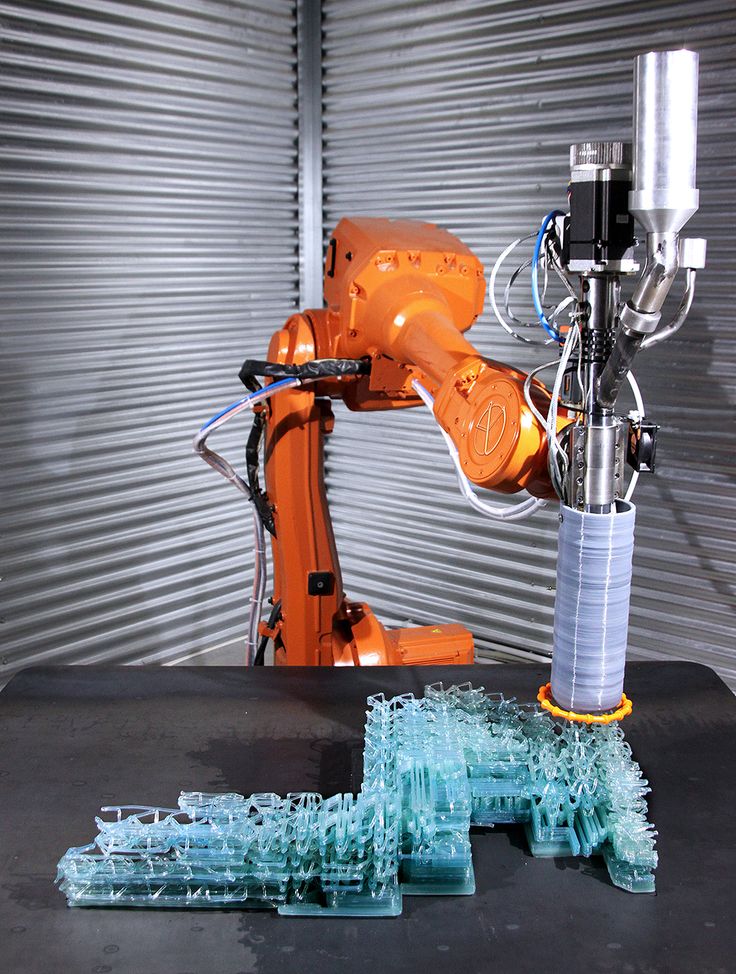
The functional robots 3D printed are obviously the most incredible, but they will require more work time. These are real projects including electronics (Raspberry pi or Arduino) and some programming skills.
Decoration robots are less complicated to print and assemble, but they are still excellent. It is really a subject that inspires the 3D designers, they create their own design or are inspired by already existing robots like Bender from Futurama, Optimus Prime, R2-D2, Well-E, etc..
Robot 3D printing technologies and 3D printer applications in robotics
Robot 3D printing technologies and 3D printer applications in robotics | project news 3DPulse.Ru3d pulse.ru
Our new report "Construction 3D printing in Russia" has been published
Our report "Construction 3D printing in Russia" has collected information about domestic companies and start-ups that produce. ..
..
Vladimir Viktorovich Molodin (SIBSTRIN): "The idea [of printing with polystyrene concrete] appeared three years ago, and it took 30 years to get there."
Interest in 3D construction printing is growing rapidly around the world, with most of the developed 3D printers working with...
Mass 3D printing of individual houses: reality or utopia? - public study by Techart group
In its public survey, Techart explores whether 3D printing can bring something really new to the construction industry...
Viktor Mann (RUSAL): "In Russia, additive manufacturing is one of the fastest growing industries"
RUSAL is a leading company in the global aluminum industry and the largest aluminum producer with a low carbon footprint. Her...
"3D Printing in the Oil and Gas Industry: Incentives and Constraints" - Techart Group Public Study
Techart Consulting Group published a study analyzing the current state and development prospects...
Current news
robots
3D robotic printers to repair railways in the UK
Amey, a British infrastructure services provider, has unveiled internal plans to use 3D printing for. ..
..
robots
3D printed robotic fish swims at a record speed of 0.85 m/s
Sander van den Berg, industrial design and engineering student at Delft University of Technology...
robots
A 3D printing head for robotic arms is being developed in Slovakia
In the new paper "Designing a Print Head with a 3D Printing Extruder with Plastic and Recycled Plastic for...
robots
Researchers develop 3D printing technology for miniature parts for soft robots
Scientists from Singapore University of Technology and Design, Southern University of Science and Technology and Zhejiang...
robots
Scientists improve 3D printed soft robots
A team of scientists from the Delft University of Technology in the Netherlands have presented 3D printed multicolored. ..
..
robots
3D-printed microscopic robots can solve problems together
Georgia Institute of Technology in the USA has developed microscopic 3D-printed robots that are almost...
robots
Automated actuators will enable robots to perform new tasks
A team of MIT researchers unveils 3D printed...
robots
Youbionic introduces Drone for Handy, a quadcopter with bionic arms
The Youbionic team presents a new concept of Drone for Handy, a drone with bionic arms. Initially, the company was engaged in the sale ...
robots
3D printed robots could deliver drugs to humans
More and more researchers around the world are working on tiny robots designed to deliver...
?
3D printing events
Email:
By submitting this form, I consent to the processing of my personal data in accordance with Policy regarding the processing of personal data.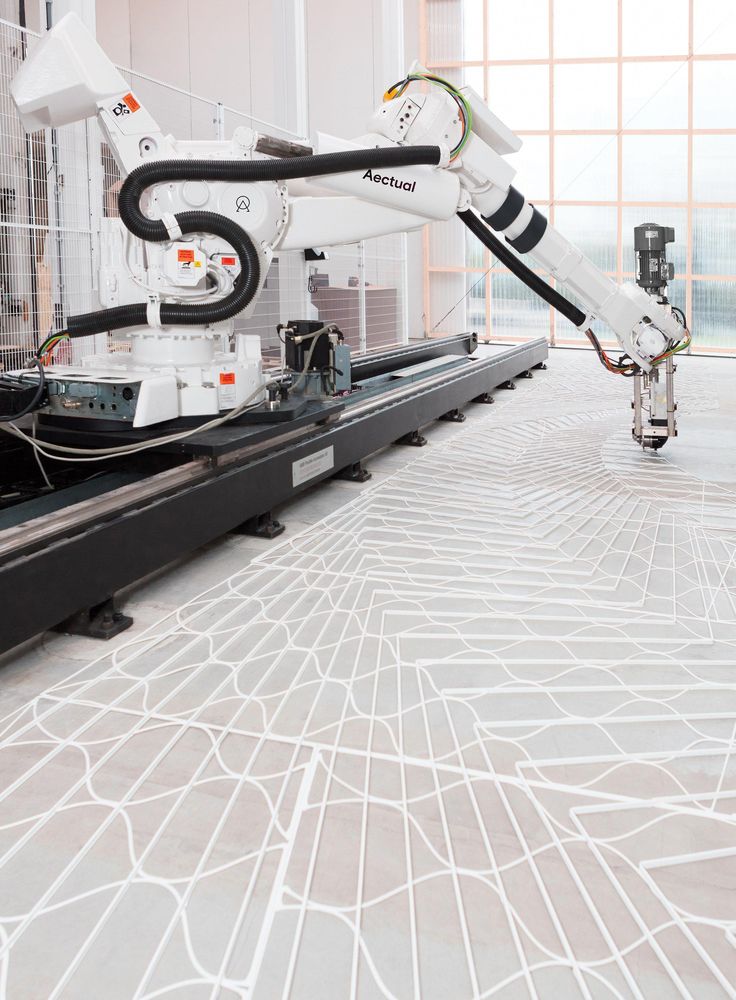
1 23...1415Next
3d printer in the computer science classroom, application experience / Sudo Null IT News Informatics teacher Pavel Tomshin participated in the marathon as a volunteer.
Pavel’s school (Lyceum No. 109) already has a 3D printer, and since the topic of using 3D printing technology in educational processes has long interested me in schools (in my opinion, quite interesting and promising), I asked him to tell me about the experience of using 3D printer at his school (lyceum). This is what the article will be about.
Technomarathon
And here is a photo from the technomarathon — Pavel helped us a lot at the event, because already had experience with this printer model, helps to install the control module.
Home
Pavel:
The need for 3D printing at Lyceum No. 109, which had been brewing for some time, materialized in the form of a bq PRUSA i3 received for winning the robotic competition "Robot Racing" held by the Ural Federal University in early 2015 Since no harmful fumes are emitted when printing with PLA, the printer found its place on the teacher's desk.Now, a fourth thing has been added to the things that a person can look at forever: the process of printing a 3D printer.
Models
Of course, first of all, models from the Internet are printed, such interesting models were printed
in this program.
Here is what Pavel himself says:
As I got to know 3D printing technology, I came to understand what and how to do with students to popularize 3D technologies in the Lyceum. A trial course of 3D modeling has been developed and is being implemented with fifth-graders, followed by printing of the results of the classes. We model in 3DMax (the Lyceum has a license for 14 places Autocad, 3DMax, moreover, these products have been free for educational institutions for a couple of years). The very first lesson involves the creation of a spectacular model - a "ball in a cube"
At the next lesson, the guys created a “medal with a text”.The guys googled the work with the Text spline and the Extrude modifier on their own. Construction was born
For lessons
Of course, 3D modeling can be useful in school subjects as well.
Mathematics teacher Yusupova Tatyana Viktorovna gave our 3D circle an order for the production of three-dimensional figures - visual aids for geometry lessons in high school. It was not difficult for the five-graders to complete this task.
Pyramid for mathematicians:
Bodies of rotation (a lesson in mathematics in the computer class is ripening - “Bodies of rotation”, with further printing:
Construction
Of course, a separate topic in 3D modeling is design.
The guys made a lamp. Designed, printed, finished with a file to insert 2 batteries and an LED on adhesive tape:
3D printing for Lego
Pavel runs a Lego robotics club at school, and one of the problems is organizing the storage of parts.
And for this he made - Lego modules for classes. Where fastenings are made using 3D printing, specifically for certain parts from the Lego set. At the beginning of the lesson, you can see where to get it from, at the end - is everything in place.
In the development of the theme: a mobile box for outdoor classes.
3D printing in robotics
An example of expanding the functionality of LEGO through 3D printing - a marker holder was made so that you can control the drawing: lower / raise the marker. For the lesson of informatics "Coding of graphic information".
Presentations
Excursion, within the framework of "MDO Constellation":
Immediately there is an application for 3D printing :)
Robotics
I asked Pavel a question about the prospects for the use of robotics in educational processes, his thoughts on this matter:
There is a problem of interdisciplinary connections when students solve problems.
Learn more


